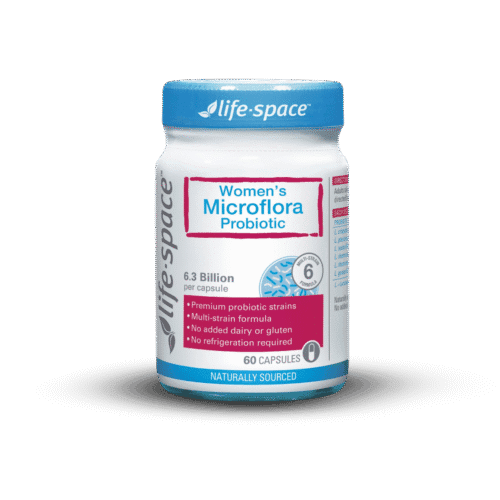Vaginal hypoplasia is the underdevelopment or incomplete development of the vagina in utero, and is an anatomical abnormality.
The vaginal narrowing can range from being very severe, as in the vagina may be smaller than normal, or alternatively, the vagina can simply not exist. Upon first inspection, it can look like an imperforate hymen, and less commonly, a transverse vaginal septum. Vaginal hypoplasia is found in one in every 3,000-5,000 live births.
The complete lack of a vagina happens when the specific cells fail to develop (vaginal agenesis), and is associated heavily with Mayer-Rokitansky-Küstner-Hauser (MRKH) syndrome (also known as Müllerian agenesis).1
The result of MRKH syndrome is no uterus and a short, misshapen or missing vagina, but the retention of normal ovaries and external genitalia (vulva). A relative of vaginal hypoplasia is cervical agenesis, where the uterus exists, but the cervix does not.
The situation becomes serious when a girl hits puberty and starts to menstruate, so the uterus is producing blood that has nowhere to go. This is called hematocolpos.2
What causes vaginal hypoplasia?
The most common causes are MRKH syndrome and an insensitivity to androgens (complete androgen insensitivity syndrome, CAH).3
How is vaginal hypoplasia treated?
One of the first things to do before anything else is to manage the menstrual cycle to avoid blood accumulating in the uterine cavity. Once an outlet is created, a normal cycle can be restored.
Self-dilation for vaginal hypoplasia
If there is some vagina there, self-dilation has been found to be useful with a success rate of about 75 per cent.4 This is almost always a great start, as it doesn’t include surgery and has good results, and after 2-4 months, you can have your very own faux vagina.5
This takes dedication by you, and a wish to avoid extensive surgery, but comes with its own set of problems: lubrication, your new vagina becoming smaller, and painful sex (dyspareunia is experienced by 20 per cent of women who undergo self-dilation).6
Those with MRKH syndrome having no uterus or vaginal tract can have a ‘vaginal pouch’ made – a shallow faux vagina – as there is no need to make a canal for menstrual blood, as none exists.
Vaginoplasty for vaginal hypoplasia
This surgery is used when self-dilation is unacceptable to the patient for some reason, or self-dilation has failed to get a good result. Oft-used is the Vecchietti technique, whereby an olive-shaped device is pressed against the potential vaginal space using a thread through the skin.7
This thread weaves behind the bladder and pubic bone, coming out of the skin just below the belly button. It is there attached to a plate which provides counter-traction.
Other methods of vaginoplasty include using skin grafts or grafts from intestinal tissue (colovaginoplasty), however the Vecchietti technique has a very high success rate – over 99 per cent for anatomical correctness, and 96 per cent for functionality success. Skin and intestinal grafts have lower success rates, sitting at between 83 and 95 per cent. Self-dilation is required post-surgery to maintain the new shape in the absence of penetrative sex.
Fertility with vaginal hypoplasia
Most often those with vaginal hypoplasia do not have a functioning uterus, despite having functional endometrial tissues, making carrying a baby impossible.8,9 If by chance you happened to have a functioning uterus, there is the possibility that you could carry a baby and have a caesarean delivery.
References
- 1.Acién P, Acién M. The presentation and management of complex female genital malformations. Hum Reprod Update. Published online November 3, 2015:48-69. doi:10.1093/humupd/dmv048
- 2.Tanitame K, Tanitame N, Urayama S, Ohtsu K. Congenital anomalies causing hemato/hydrocolpos: imaging findings, treatments, and outcomes. Jpn J Radiol. Published online April 11, 2021:733-740. doi:10.1007/s11604-021-01115-7
- 3.Wright KN, Okpala O, Laufer MR. Obstructed uteri with a cervix and vagina. Fertility and Sterility. Published online January 2011:290.e17-290.e19. doi:10.1016/j.fertnstert.2010.05.051
- 4.Callens N, De Cuypere G, De Sutter P, et al. An update on surgical and non-surgical treatments for vaginal hypoplasia. Human Reproduction Update. Published online June 3, 2014:775-801. doi:10.1093/humupd/dmu024
- 5.Callens N, Weyers S, Monstrey S, et al. Vaginal dilation treatment in women with vaginal hypoplasia: a prospective one-year follow-up study. American Journal of Obstetrics and Gynecology. Published online September 2014:228.e1-228.e12. doi:10.1016/j.ajog.2014.03.051
- 6.Dural Ö, Poyrazoğlu Ş. Conservative Management of Vaginal Hypoplasia. Jcrpe. Published online January 1, 2020:50-52. doi:10.4274/jcrpe.galenos.2020.2019.s0222
- 7.Deans R, Berra M, Creighton SM. Management of Vaginal Hypoplasia in Disorders of Sexual Development: Surgical and Non-Surgical Options. Sex Dev. Published online 2010:292-299. doi:10.1159/000316231
- 8.Alonso Pacheco L, Carugno J, Alcázar JL, et al. Infantile uterus and uterine hypoplasia: a comprehensive overview to explore possible managements amidst limited scientific certainties. FVVO. Published online April 7, 2025:5-14. doi:10.52054/fvvo.2024.13354
- 9.Van Batavia JP, Kolon TF. Fertility in disorders of sex development: A review. Journal of Pediatric Urology. Published online December 2016:418-425. doi:10.1016/j.jpurol.2016.09.015

Get a fresh perspective with a qualified, experienced vulvovaginal specialist naturopath.
This product has multiple variants. The options may be chosen on the product page
The most comprehensive vaginal microbiome test you can take at home, brought to you by world-leading vaginal microbiome scientists at Juno Bio.

Promote and support a protective vaginal microbiome with tailored probiotic species.






